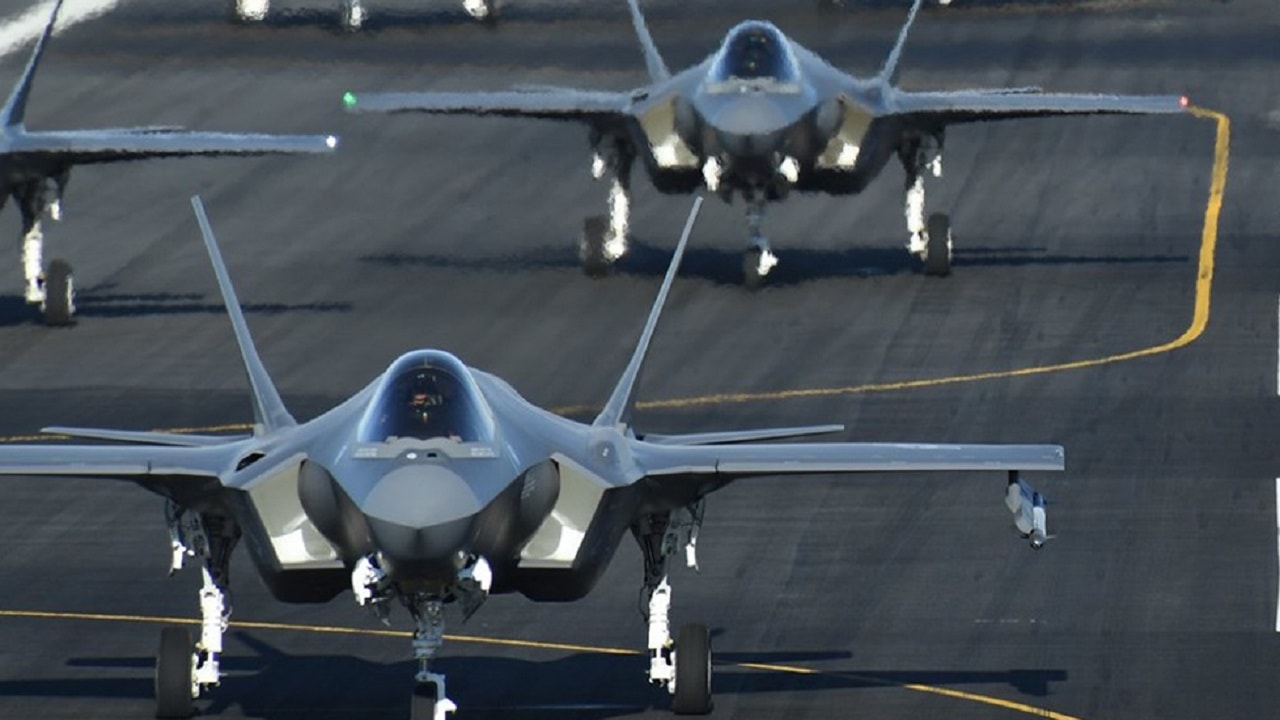The F-35 Lightning II: Revolutionizing 21st Century Aerial Warfare – The F-35 Lightning II, a marvel of modern engineering and a cornerstone of 21st-century aerial warfare, was conceived in response to evolving military needs and geopolitical shifts.
Its creation marks a significant leap in stealth, versatility, and network-centric warfare capabilities.
Historical Context: The Post-Cold War Era
The end of the Cold War in 1991 ushered in an era of unpredictable threats, ranging from regional conflicts to global terrorism.
This required a versatile and adaptive military response.
While aircraft like the F-15 Eagle and F-16 Fighting Falcon excelled during the Cold War, the shifting landscape demanded a new generation of aircraft prioritizing stealth, advanced avionics, and interoperability.
Technological Imperatives: Stealth and Beyond
The F-35’s creation was heavily influenced by the success of stealth technology in aircraft like the F-117 Nighthawk and B-2 Spirit.
The F-35 aimed to integrate cutting-edge technologies, envisioning a multi-role fighter capable of air-to-air combat, air-to-ground strikes, intelligence, surveillance, reconnaissance (ISR), and electronic warfare.
This versatility demanded advanced avionics, sensor fusion, and network-centric capabilities for unparalleled situational awareness.
Strategic Considerations: The Joint Strike Fighter Program
The Joint Strike Fighter (JSF) program, initiated in the 1990s, aimed to develop a single aircraft adaptable for the Air Force, Navy, and Marine Corps, as well as allied nations.
This approach sought cost efficiency through economies of scale and ensured interoperability among U.S. military branches and allied forces, maintaining technological superiority and global reach.
Development and Challenges of the F-35 Program
Lockheed Martin won the contract to develop the JSF in 2001. The program faced technical, financial, and political hurdles due to the aircraft’s complexity and the need to develop three variants: the F-35A (conventional takeoff and landing), F-35B (short takeoff and vertical landing), and F-35C (carrier-based).
Each variant had to meet different operational requirements, adding to the program’s complexity.
F-35 Lightning II Capabilities and Impact
The F-35 Lightning II emerged as a game-changer, bringing transformative capabilities:
Stealth: The F-35’s design minimizes its radar cross-section, making it difficult to detect and track, allowing it to penetrate defended airspace with a higher likelihood of success.
Sensor Fusion: Advanced sensors and avionics provide pilots with a comprehensive battlespace picture, enhancing situational awareness and decision-making through sensor fusion technology.
Network-Centric Warfare: The F-35 operates within a networked environment, sharing data with other platforms and command centers, enabling coordinated operations and maximizing joint and coalition forces’ effectiveness.
Versatility: The F-35’s multi-role capabilities allow it to perform a wide range of missions, from precision strikes to ISR and electronic warfare.
Global Reach: With numerous international partners, the F-35 program ensures its role as a key component of collective defense and deterrence strategies.
Conclusion: The F-35 Rules
The F-35 Lightning II was born from the need to adapt to an evolving security environment. Its development reflects a strategic vision for technological superiority, enhanced interoperability, and versatile, networked capabilities.
Despite development challenges, the F-35 has emerged as a cornerstone of 21st-century airpower, embodying stealth, advanced technology, and joint operability principles.
As it continues to integrate into the U.S. military and allied forces, the F-35 is poised to shape the future of aerial warfare for decades to come.
About the Author: Harry J. Kazianis
Harry J. Kazianis (@Grecianformula or Email: [email protected]) is Senior Director of National Security Affairs at the Center for the National Interest. He also serves as Executive Editor of its publishing arm, The National Interest. Kazianis has held various roles at The National Interest, including Senior Editor and Managing Editor over the last decade.

